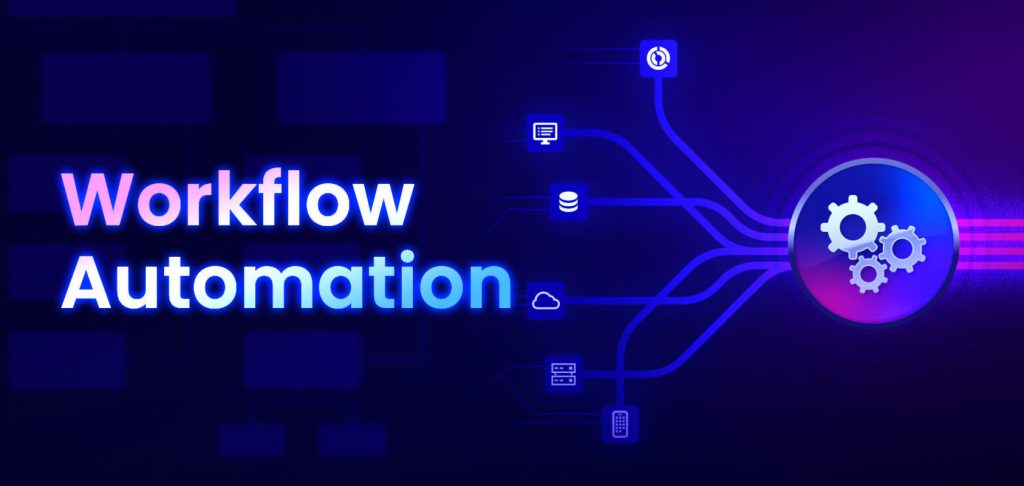By automating repetitive tasks, businesses can free up valuable human resources to focus on more strategic initiatives, ultimately boosting productivity and customer satisfaction. This guide will explore what workflow automation is, how it works, its benefits, and how to implement it effectively.
What is Workflow Automation?

Workflow automation is the process of using software to automate business processes, tasks, and workflows with minimal human intervention. It involves creating a series of automated actions that guide tasks through predefined steps, ensuring consistency and efficiency.
For example, when a task is marked as complete in one system, workflow automation can automatically route it to the next assignee and update relevant dashboards, saving time and reducing errors.
How Workflow Automation Works
Workflow automation relies on task management software to route tasks and information between people and systems based on predefined rules and triggers. Here’s a step-by-step guide to getting started:
- Understand Your Current Workflow: Begin by gathering information on how tasks flow among teams, including roles, responsibilities, and bottlenecks. Identify what triggers each task and how it progresses.
- Visualize the Workflow: Create a visual outline of your workflow to highlight inefficiencies. Collaborate with cross-functional teams to refine the draft and eliminate wasteful practices.
- Identify Integration Needs: Determine which tasks require data from other systems and ensure your workflow automation software supports these integrations. Adjust the workflow as needed to accommodate these requirements.
- Address Inefficiencies: Tackle common issues like communication breakdowns and overdue tasks by adding accountability measures or clarifying information flow between systems.
- Leverage Automation Software: Use workflow automation software to describe each task and assign user roles. Provide visibility through tools like Gantt charts, process maps, and calendars.
- Create Automated Triggers: Set up automated triggers and actions to streamline recurring tasks. Customize these based on your unique needs or use pre-built options.
- Test and Optimize: Continuously test and refine your automated workflow to resolve issues. Establish performance metrics and use dashboards to monitor progress and blockers.
- Train Your Team: Conduct hands-on training to prepare your team for the new automated workflow. Use change management plans to ease the transition.
If you’re unsure where to start, consider using a free workflow template to jumpstart your automation process.
Benefits of Workflow Automation
Workflow automation offers numerous benefits that can transform your business operations:
- Increased Efficiency: Automating repetitive tasks allows employees to focus on higher-value work, boosting overall productivity. Automated processes can operate 24/7, further enhancing efficiency.
- Error Reduction: Automated workflows minimize human error by ensuring tasks are executed consistently according to predefined rules. This leads to greater accuracy in data entry, calculations, and processing.
- Improved Collaboration: Workflow automation tools often include features that promote teamwork, such as real-time updates, shared workspaces, and automated notifications. These tools keep everyone aligned and informed.
- Cost Savings: By reducing the need for manual labor and minimizing errors, workflow automation helps businesses save on operational costs. It also optimizes resource allocation, preventing overspending.
- Scalability: Automation allows businesses to handle increased workloads without proportionally increasing their workforce, supporting growth without compromising quality or efficiency.
Best Practices for Implementing Workflow Automation
To maximize the benefits of workflow automation, follow these best practices:
Start Small: Begin with a simple process and gradually expand to more complex workflows as you gain experience.
Involve Stakeholders: Include team members who will use the automated workflows in the planning process. Their input ensures the system meets their needs and improves adoption.
Monitor and Optimize: Regularly review the performance of your automated workflows and make adjustments as needed. Track metrics like time saved and user satisfaction to refine your processes.
Balance Automation and Human Oversight: Design workflows with checkpoints for human review, especially for critical decisions. This ensures automation enhances rather than replaces human judgment.
Features to Look for in Workflow Automation Software

When selecting workflow automation software, consider the following features:
- Ease of Use: A user-friendly interface ensures quick adoption and a faster return on investment.
- Integration Capabilities: Seamless integration with existing systems and applications is essential for smooth data flow and maximizing automation.
- Customization and Flexibility: The ability to tailor workflows to your specific needs ensures alignment with your business objectives.
- Scalability: Choose software that can handle increasing workloads as your business grows.
- Reporting and Analytics: Insightful reporting tools help you track progress and identify areas for improvement.
- Security: Robust security measures, such as encryption and access controls, protect your data from unauthorized access.
- Mobile Accessibility: Mobile-friendly interfaces enable teams to stay productive and manage workflows from anywhere.
Conclusion
Workflow automation is a powerful tool for businesses looking to enhance efficiency, reduce errors, and improve collaboration. By understanding how it works, its benefits, and best practices for implementation, you can unlock its full potential and drive your organization toward greater success.
Whether you’re a product manager, engineering lead, or project manager, workflow automation can transform the way you work, enabling you to focus on what truly matters—strategic growth and innovation. Start small, involve your team, and continuously optimize your workflows to achieve the best results.
